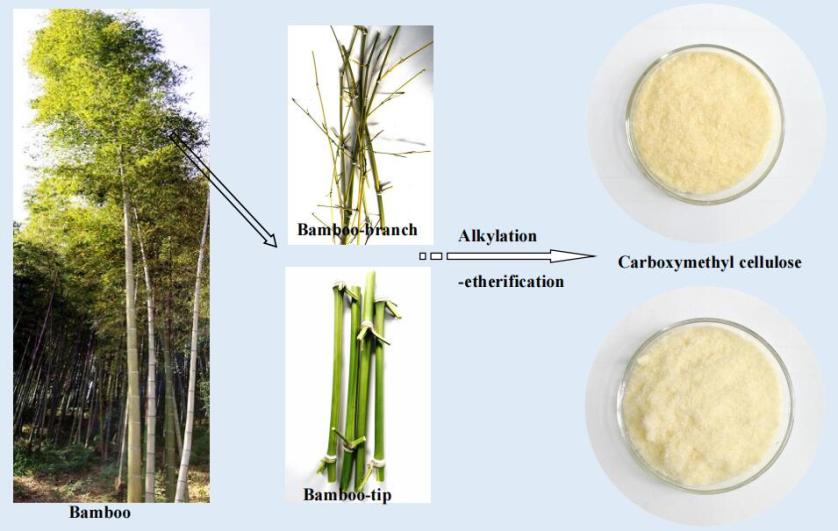 Open Access
Open Access
ARTICLE
Characterization of Carboxymethyl Cellulose Made from Bamboo Harvesting Residues
School of Forestry and Landscape Architecture, Anhui Agricultural University, Hefei, 230036, China
* Corresponding Author: Shuangyan Zhang. Email:
Journal of Renewable Materials 2022, 10(12), 3229-3241. https://doi.org/10.32604/jrm.2022.020489
Received 26 November 2021; Accepted 19 January 2022; Issue published 14 July 2022
Abstract
Bamboo harvesting residues are wastes by-products of bamboo industries that contain holocellulose for about 63.14% to 70.71%, which often be discarded, incinerated or buried. In this study, carboxymethyl cellulose was prepared from bamboo harvesting residues (bamboo-branch and bamboo-tip) as raw materials. The chemical composition of bamboo harvesting residues, the viscosity and degree of substitution of carboxymethyl cellulose were determined. Carboxymethyl cellulose obtained was further characterized and compared by means of FTIR, SEM, XRD and TG. Results showed that under the optimized identical conditions, the viscosity and degree of substitution of carboxymethyl cellulose from bamboo-branch and bamboo-tip were 6.0 and 78.9 mPa·s, 0.75 and 0.89, respectively. Carboxymethyl cellulose obtained from bamboo-tip displayed a lower crystallinity and a better thermal stability as compared to synthetic carboxymethyl cellulose obtained from bamboo-branch and bamboo-culm.Graphic Abstract

Keywords
Cite This Article
 Copyright © 2022 The Author(s). Published by Tech Science Press.
Copyright © 2022 The Author(s). Published by Tech Science Press.This work is licensed under a Creative Commons Attribution 4.0 International License , which permits unrestricted use, distribution, and reproduction in any medium, provided the original work is properly cited.


 Submit a Paper
Submit a Paper Propose a Special lssue
Propose a Special lssue View Full Text
View Full Text Download PDF
Download PDF Downloads
Downloads
 Citation Tools
Citation Tools